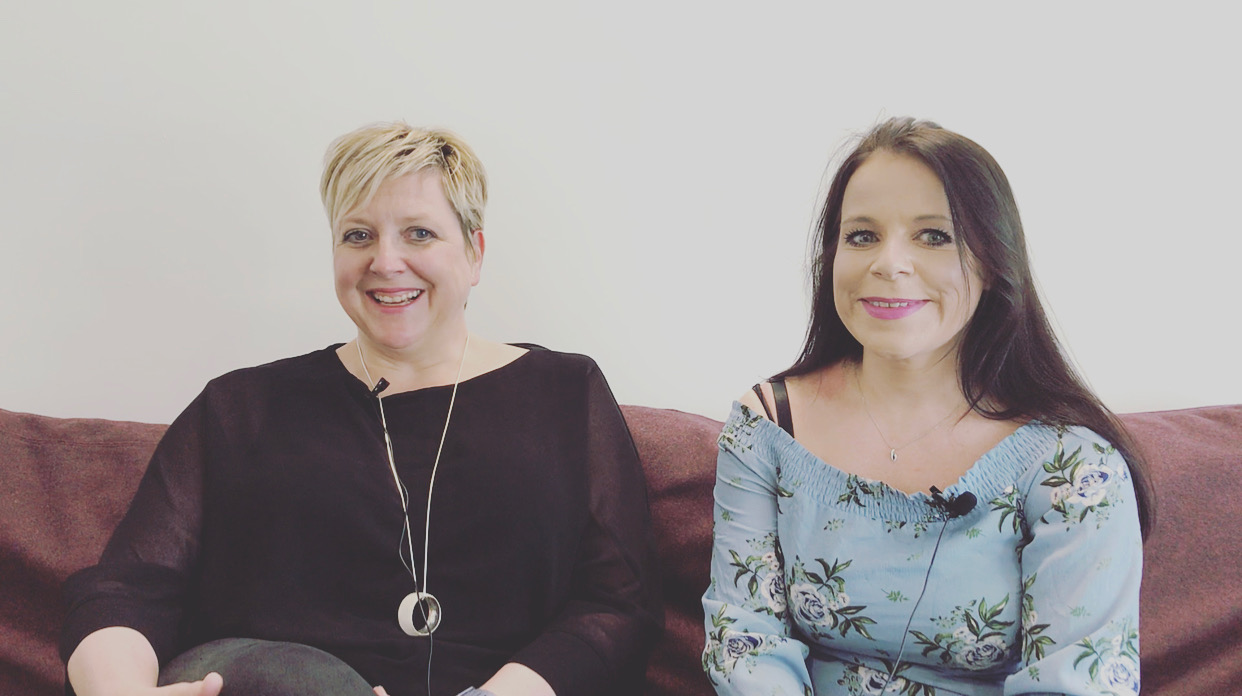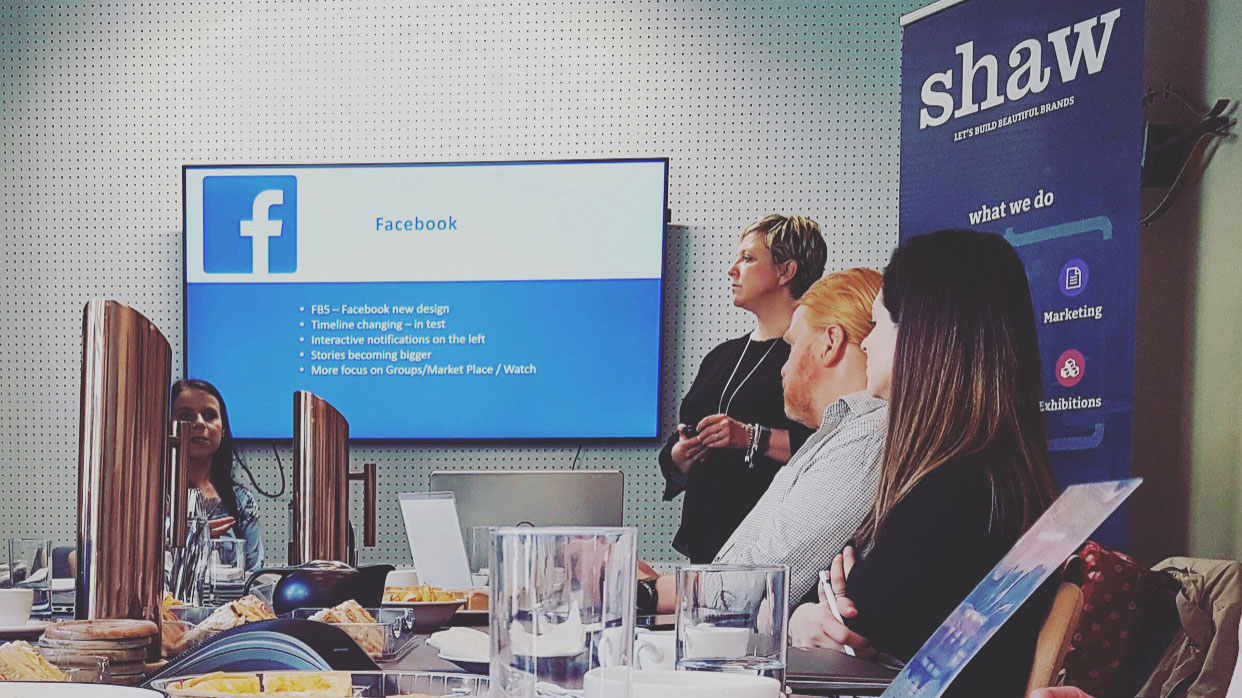On Social Media Success: The Orbit Agency Interview
Louie Gray
Project Manager at Shaw

Social media: without a doubt, this is now a key ingredient in the marketing mix.
Facebook, Twitter and Instagram are now flooded with businesses eagerly wishing to tap into the magical upturn in business promised to those who have captured the winning formula.
The formula, it turns out, can be refreshingly simple: a fact that I realised at an illuminating advanced social media workshop conducted by Diane Murray and Claire Mcleod from Orbit Agency, which we hosted at our office in Lochrin Square. After the workshop, I caught up with them to hear more about their social media philosophy, and what five years at Orbit has taught them about how to help businesses help themselves in the digital sphere.


1. How effective is social media as a marketing tool?
Claire: For us it’s really important and we would consider it to be an integral part of the marketing mix in today’s world. I think every business, regardless of sector, needs to be thinking about what’s appropriate for them and how it integrates with their other marketing tools.
2. What kind of businesses benefit from social media marketing, would you say?
Diane: I think, to be honest, there’s not a business that wouldn’t benefit. Across all sectors, it’s important to connect with your audience via social media.
3. What steps should businesses take to protect their brand integrity when using social media as a marketing tool?
Claire: For us it’s all about the business voice, the business aims, who you’re trying to reach, what your message is. Whether it’s to promote your brand, help with your sales activity or reach out to an audience that you’re looking to engage with, there are lots of different reasons for using social media. So, in protecting the brand through that, you have to be very clear on any client’s goals.
4. And do you think it’s worth investing in things like social media assets and icons?
Claire: I would say so. As part of your marketing mix it’s really important to have quality running through everything you’re doing on social media. Particularly now, more than ever, where the social media channels are reducing the organic reach through their algorithms, quality is paramount in everything, so if you are investing in your brand you should certainly be extending that to your social media assets to keep your message consistent.
5. What’s the most frequent mistake you see businesses making around brand communication?
Diane: Selling all the time and pushing product or service without trying to find what the audience wants. It’s all about nurturing relationships and building a community. If it’s just pushing product or service, it’s not going to work.
6. And what do you think are some of the biggest misconceptions amongst your clients regarding social media in general?
Diane: I think it can be that it is either expensive or that it doesn’t work. While it’s unlikely to be an overnight success, if you really nurture and work at it, put the right kind of content out and engage with your audience then it can be really powerful.
Claire: It’s like any form of marketing: if you try to take shortcuts, that will reflect in your results and it can be a hugely frustrating experience for the client and for the business. So, as Diane said, really being quite consistent in what you’re looking to do and then putting in the time and effort. And the time part of it is a really big barrier for a lot of us because we’re busy doing what we do running our businesses and so to add to the list of things to do can be quite pressurising for a business owner. It’s all about building it into your everyday working week – and not giving up too quickly.
7. What does it take to be a great social media manager?
Claire: I would say it’s the human element – you’ve really got to understand people; you’ve got to understand your customer, which is a very obvious statement to make, but on an emotional level you’ve got to be able to connect with what resonates with them, what’s important to them, what produces any form of emotion in them – whether it’s good emotion or things that they feel are important – you’ve really got to take time to understand them as people, and if you can understand them as people then you can respond accordingly in both a proactive and reactive way.
8. If you had an allotted time during a week to spend on social media, what percentage of your time would you spend creating content versus engaging with other people’s content?
Diane: I don’t think that there’s a really prescribed formula in terms of how much time you spend because if you do follow a formula then you could find that you’re neglecting one area over the other. It’s equally important to be able to create good engaging content and to engage in content. You should keep an eye on both.
Claire: What we try to do is to take a view of what’s important for you as a business over the next 6 to 12 months, and then break it down into quarters or even months, so you could maybe focus on content creation next month and then on more engagement or live environment activity the following months, ensuring that over the agreed period you will have covered everything you need to cover as a business and, hopefully, achieve those goals.
9. And what would you say the main differences in approach are between business-to-business marketing and business-to-customer marketing.
Claire: I would say business to business marketing is a big opportunity for partnership working, collaborating, working around brand advocacy, whereas business to customer is a lot more about customer experience.
10. And how would you describe the relationship between a business’ social media platforms and its website? Is this relationship different from business to business?
Claire: There’s a lot of debate around the role of websites today and where they sit alongside social media. Our belief is that it’s a vital and an integral part of the marketing mix and one needs the other – they can’t really operate in isolation from each other.
11. For a business with little-to-no social media experience, what do you think is more harmful: not setting up any accounts at all or setting up accounts and using them but failing to think about brand identity and voice?
Diane: I would say that they’re both, in equal measures, harmful. You don’t want to be doing either! I suppose if you’ve not created a platform or a presence then at the very least you need to!
Claire: A lot of consumers are using social media platforms as a research tool. They may well find your website through the domain link but they may go to Facebook first just to check you out and see what kind of content you’ve put up there. If they don’t find it, it might not be the end of the world to them but possibly, subliminally, they’re making a judgement on your business based on your lack of presence. But, equally, adding a presence and not having a sufficient level of good current content, or the wrong type of content, can do damage as well, so businesses have to be mindful that they have really powerful marketing tools at their disposal, and that they just need to give the time and resource to plan for these channels.
12. And if you were a small business owner that wanted to make a start on social media but didn’t know how to go about it and had limited budget, what would you have them do?
Diane: I would encourage them to go to their local Business Gateway. Not only are there workshops that they can attend, where they can find out how to go through the steps, but they can also access online tutorials.
13. And if you did have budget for social media, where would you allocate it first?
Diane: People often consider Facebook marketing as affordable – and it is really affordable. But to have any kind of impact you need to test different adverts on different audiences, so my suggestion would be to allocate a small amount on different adverts with different types of content and test across different audiences. The results will determine the type of advert and appropriate budget going forward. It’s all about testing with social media.
14. What kind of direction is social media going in now as a whole? What are the trends in the big social media platforms now as you see them?
Diane: In terms of platforms, Instagram is becoming more and more powerful. It is coming up hot on the heels of Facebook, but that isn’t to say that Facebook is on its way down in any way. A quarter of the world’s population is part of the Facebook community. Whether you’re a consumer or a marketer you’re gaining from the creation of this community. On a practical level, in terms of content, it is about video – it’s about creating something that’s going to get people talking whether it’s going to educate or entertain them. As consumers, we need to have some kind of value when we go to those platforms and as a marketer we need to be able to provide that value and make it as visual and engaging as possible.
Claire: I think, as businesses, we’ve always got to bear in mind that these are social networks and, while we can promote our businesses and social enterprises within that environment, we need to bear in mind the social aims of the channels as a whole and be able to align ourselves with those social aims. I think if we can do that, our business goals will be achieved. For us, the bottom line is people and it’s a very, very simple concept. Understand your own people, the people that you work with, the people that you’re trying to reach. If you can understand the people part of it then you can go a long way to understanding how to make it work for your business.
